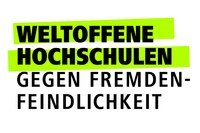Promotionsvorhaben
Interactive Physically-Based Image Synthesis
Name
Jakob Bärz
Status
Abgeschlossen
Abschluss der Promotion
Erstbetreuer*in
Prof. Dr. Stefan Müller
Gutachter*in 2
JProf. Dr. Thorsten Grosch
The simulation of light constitutes the basis of digital synthesis of realistic images. This thesis addresses three important aspects of interactive physically-based image synthesis. The first part of this work presents the derivation of a mathematical model for lighting simulation including measurement, light transport, and local reflection from radiometric principles as well as for the reproduction of metameric spectra, which are indistinguishable from the simulated quantities for the human standard observer, from a colorimetric basis. This model was exemplarily validated by comparing measurements from a physical scene and an output device reproducing the result of the lighting simulation based on Monte Carlo path tracing of the respective virtual scene. Moreover, the acceleration of path tracing by the computationally inexpensive reprojecting of camera paths yielding additional samples of the Monte Carlo estimate is demonstrated for diffuse scenes.
Building on this validated model, the second part of the thesis introduces interactive approaches to image synthesis based on splitting light transport into global illumination simulation and evaluation. The first method is based on particle tracing to generate a history of particle states which represent samples of the equilibrium distribution of light. By selectively updating the subset of particles whose state is affected by user interaction, the computational effort is reduced to the minimum necessary in dynamic scenes. In this context, novel methods to accelerate particle tracing and to efficiently handle interactions with spectral quantities of light sources and materials are introduced. The second approach is based on a combination of a finite element method with a point-based sampling of a virtual scene. The approach includes a hybrid method to interactively simulate soft shadows by unconventionally connecting common algorithms and executing them on the hardware component best suited for the task.
The third part of this thesis addresses the issue of incorporating data, which does not optimally fulfill the requirements of lighting simulation and reproduction, into physically-based image synthesis while maintaining photometric and colorimetric consistency. The evaluation conducted in this work confirms that although reconstructing spectral distributions from input tristimulus values is adequate for the simulation of direct illumination from natural light sources, radiometrically measured quantities are obligatory as input data for predictive simulations of indirect illumination. Finally, a user-driven approach to compress the dynamic range of image data exceeding the capabilities of a given display device is introduced. The findings of the user study conducted to evaluate the approach are similar to the results of previous experiments, indicating that a dedicated manual function is able to outperform automatic algorithms in specific scenarios and presentation setups due to greatly varying images and personal preference. In this context, the derivation of standard observer tone reproduction functions is discussed.





